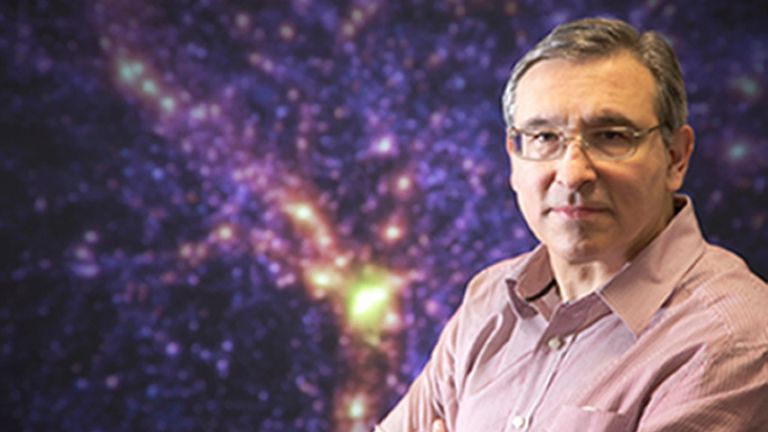Our section of the universe has been mapped in the “most accurate simulation yet” by scientists using a supercomputer.
The simulations, which were unveiled at Durham University, capture the Big Bang to the present day and the entire evolution of the cosmos.
The scientists used advanced statistical techniques so that the simulations were conditioned to reproduce our specific part of the universe – thus containing the current structures in the vicinity of our own galaxy.
At the center of the simulation is a pair of galaxies – virtual representations of our own Milky Way and the Andromeda Galaxy.
The research suggests that our local patch of the universe is unusual because the simulation predicted fewer galaxies in an average region of the universe due to large-scale local underdensity of dark matter.
The underdensity could have consequences for how scientists interpret information from studies of observed galaxies – although this is not seen as a challenge to the Standard Model of cosmology.
Dubbed Sibelius-Dark, the new simulation is part of the Simulations Beyond the Local Universe (Sibelius) project and covers a volume up to a distance of 600 million light-years from Earth.
It is also represented by more than 130 billion simulated particles – which require several thousand computers working in tandem for several weeks and producing more than a petabyte of data.
The simulation was performed on the DiRAC COSmology (Cosma) machine operated by the Institute for Computational Cosmology at Durham University.
The researchers involved were made up of people from around the world, including Durham University, and were led by the University of Helsinki.
The research results have been published on arXiv.org and as a preprint in the journal Monthly Notices of the Royal Astronomical Society.
Professor Carlos Frenk, from Durham University’s Institute for Computational Cosmology, said: “It’s hugely exciting to see the familiar structures that we know exist around us emerge from a computer calculation.
“The simulations simply reveal the consequences of the laws of physics acting on dark matter and cosmic gas throughout the 13.7 billion years that our universe has existed.
He added that the ability to reproduce these familiar structures provides “impressive support for the standard model of cold dark matter” and also shows that scientists are on the right track to “understanding the evolution of the entire universe”.
Former Durham PhD student Dr Stuart McAlpine, who is now a postdoctoral researcher at the University of Helsinki, said simulating the universe as we see it means “we are getting closer to understanding the nature of our cosmos”.
He added: “These simulations show that the current main theory of cosmology, the model of cold dark matter, can produce all the galaxies we see in our local habitat, an essential reference for simulations of this type to be successful.
“This project provides an important bridge between decades of astronomical theory and observations.”
 Universo Viviente
Universo Viviente




